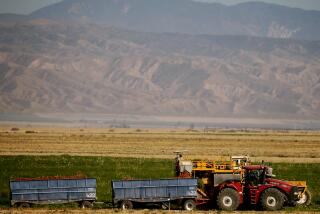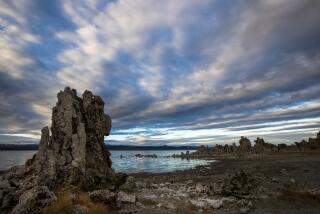Los Angeles reduces Eastern Sierra water deliveries because of climate change. At risk, ranchers say, is a way of life
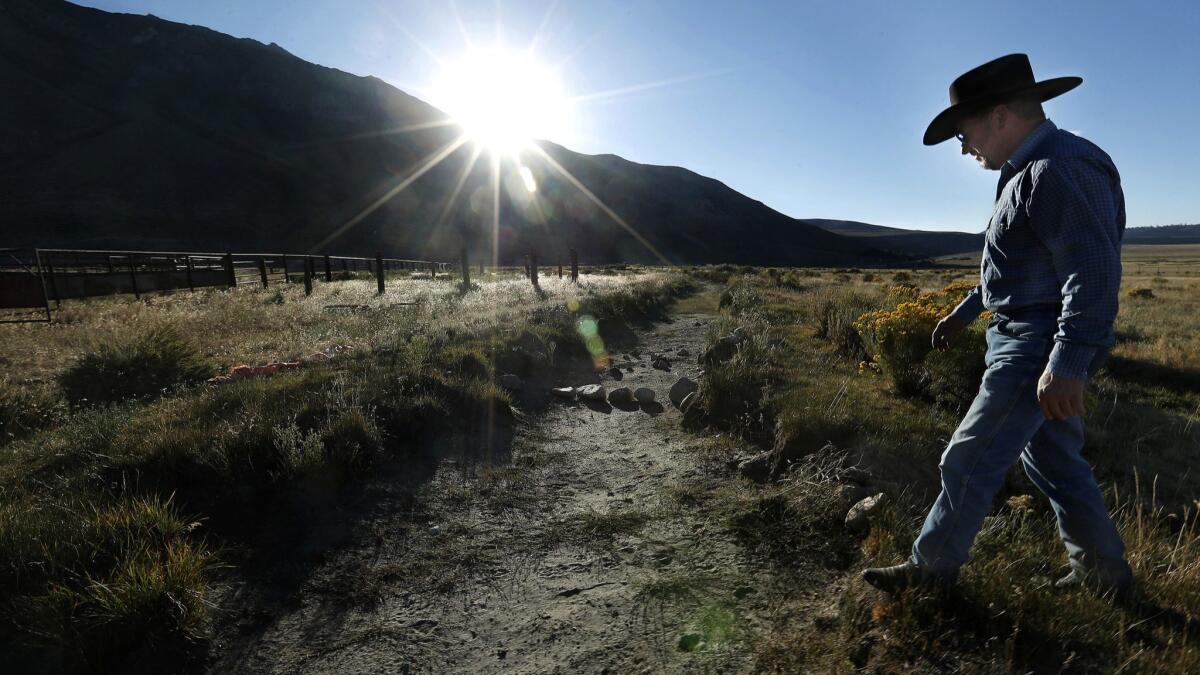
Reporting from Mammoth Lakes — The lush plains east of Yosemite National Park offer a window into a bygone California — a place where sage grouse welcome the arrival of spring with theatrical mating rituals and cattle graze on verdant pastures.
For nearly a century, these lands have been made green thanks to annual flooding by the Los Angeles Department of Water and Power, helping maintain cattle forage and keeping alive a culture of ranching in southern Mono County.
But those days may have come to an end in August.
Citing climate change, LADWP this year shifted its irrigation policy, saying ranchers who lease grazing areas on its 6,400 acres near Crowley Lake should no longer bank on the promise of ample water when they renew.
Water officials say the change is necessary as decreased snowmelt leaves them little water to spare. But the move could turn grasslands brown, rattling ecosystems, the local economy and a way of life, ranchers warn.
“Without irrigation, we’d be looking at mostly cheatgrass and tumbleweeds, which are good for nothing,” said Kay Ogden, executive director of the nonprofit Eastern Sierra Land Trust, as irrigation water flowed ankle deep across pasturelands edging U.S. 395.
“Does L.A. have the right to destroy habitat and the livelihoods of families, friends and neighbors who have lived here for generations?” she said.
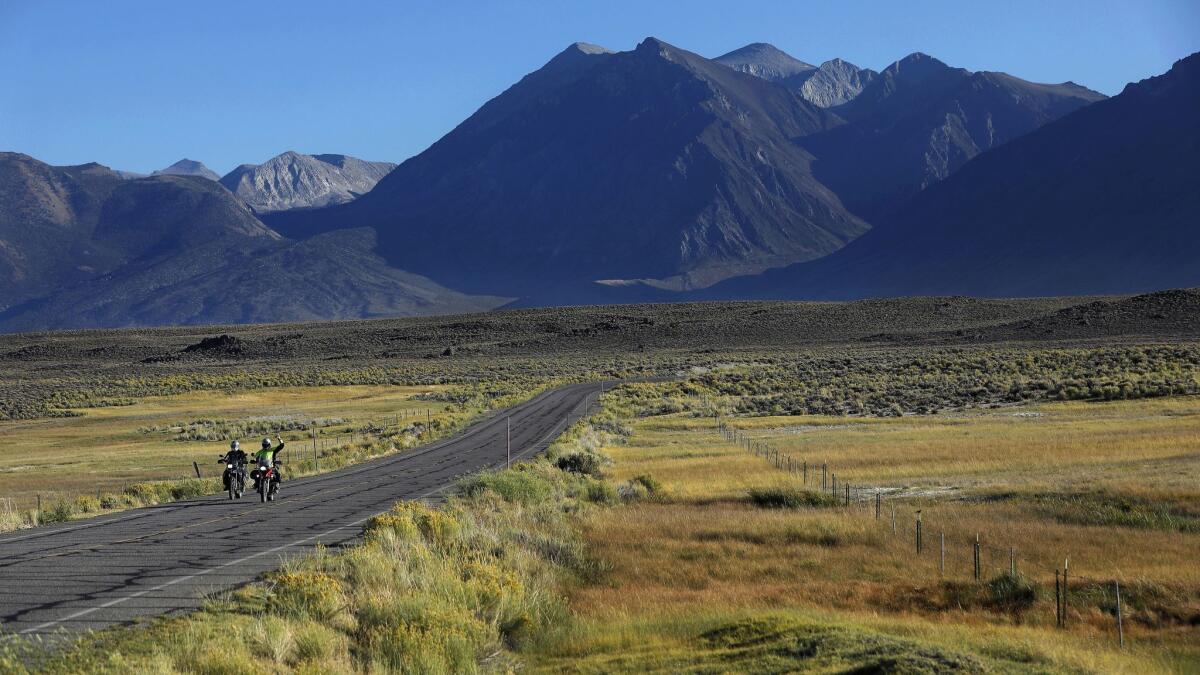
The LADWP has for seven decades provided several lessees in the area about 5 acre-feet of water per acre per year, which made their pastures nutritious through the summer and added luster to the area’s hiking, biking and angling hotspots. (An acre-foot of water equals about 326,000 gallons, more than enough to supply two households for a year.)
But as the agency prepares for a future with less snow, more rain and prolonged periods of drought, the prospect of flooding pastures with enough water to serve 50,000 families annually has lost its appeal.
The LADWP said it would have to spend about $18 million to replace the amount of water requested by ranchers and the lost hydropower it could generate — an unacceptable burden for its Southern California ratepayers of about $30 per family per year.
Beyond that, water officials say, irrigation was never a guarantee tied to the leases held by ranchers, who pay an average $10 to $15 per acre per year to graze on irrigated pastures.
As it drafts new 20-year leases for 10 longtime ranchers in area, the department says lessees should anticipate that little to no water will be available for them.
The agency said it would continue diverting about 1,000 acre-feet of water per year to protect the estimated 600 sage grouse in the area, a segment of a subspecies only found along the California-Nevada border.
The amount of water needed to sustain the bird, and whether any of it will be available to ranchers, will be determined by an ongoing environmental review, officials said.
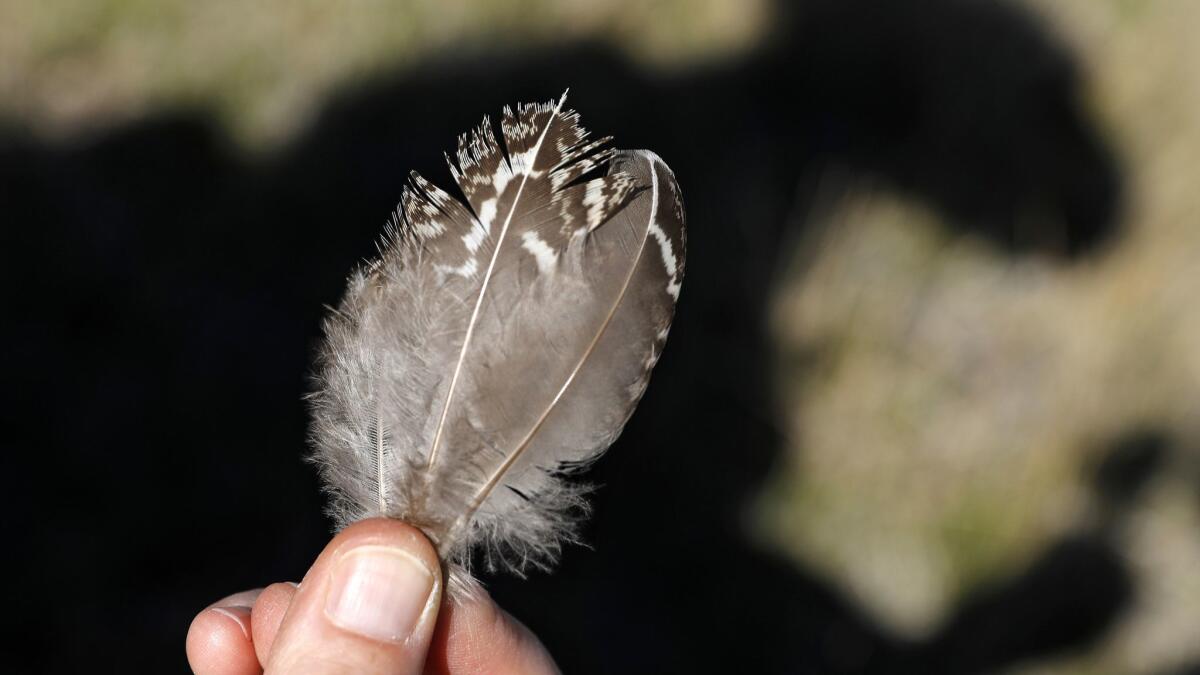
The cutbacks have enraged residents in a region defined by water wars since the early 1900s, when Los Angeles city agents posed as ranchers and farmers to buy land and water rights in Mono and nearby Inyo counties. Their goal was to build the aqueduct system needed to meet the needs of the growing metropolis 300 miles to the south.
Bob Gardner, chairman of the Mono County Board of Supervisors, summed up the tensions in a recent letter to Los Angeles Mayor Eric Garcetti.
“We refuse to accept that climate change and ratepayer obligations justify the impacts to our natural environment and regional economy,” he said. “Quite simply, LADWP’s arbitrary plan is nothing more than a veiled water grab.”
On Aug. 15, the county filed a lawsuit against the city and the agency asserting that they violated the California Environmental Quality Act by altering management policies without first analyzing their potential effects, including the increased risk of fire on dewatered pastures.
Three weeks later, the water district initiated its environmental review. Mel Levine, president of the LADWP’s board of commissioners, said negotiations with the county ceased after its lawsuit was filed, but talks continue with ranchers over “trying to get into more efficient irrigation practices.”
In late August, a drone flown by a contractor for the LADWP crashed on grazing land near Crowley Lake, sparking a fire that charred 10 acres. That land was leased by cattle rancher Mark Lacey, whose ancestors settled in the region more than 130 years ago.
“The DWP never ceases to amaze me,” grumbled Lacey, one of several lessees in the area who have reacted to the coming water reduction by reducing their herds, sending cattle up to Idaho, Wyoming, Nebraska and Oregon.
“My operation is down by about 40%,” Lacey said. “That means I have three full-time employees — including myself — instead of five, and I’m spending a lot less on lunch, gasoline and auto parts at local businesses.”
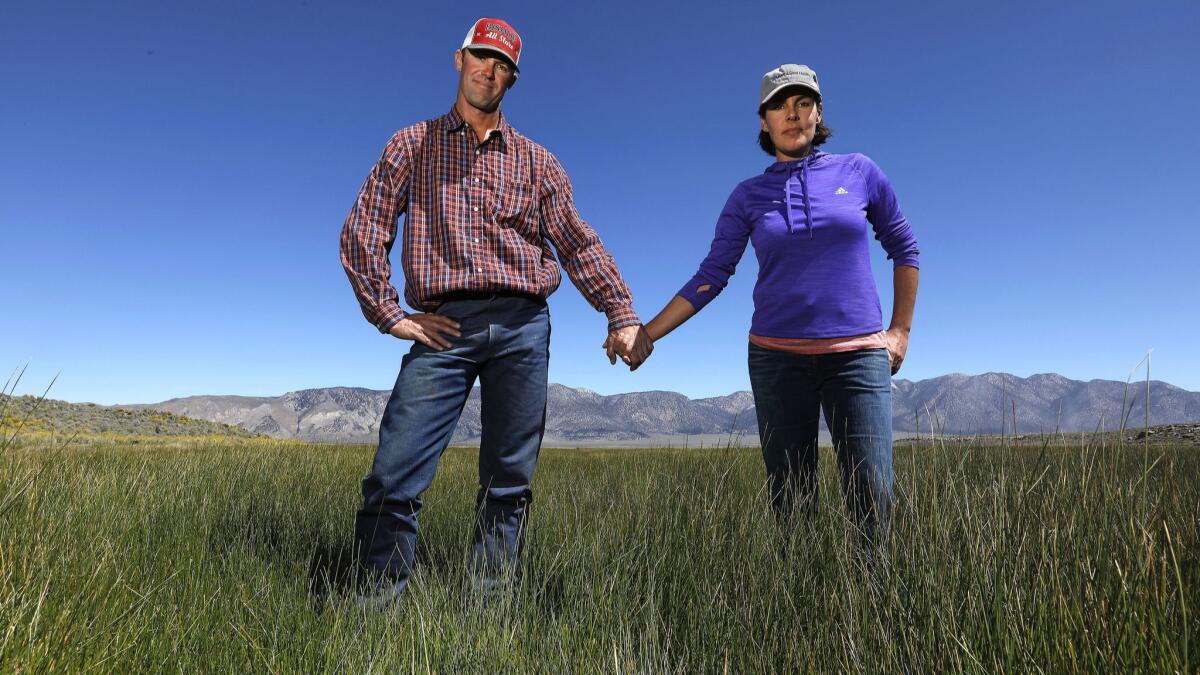
Matt and Maria Kemp, whose children are destined to become the sixth generation of ranchers to run cattle on 1,600 acres of private holdings and land leased from the DWP, said they could lose half their spread.
“There’s a long tradition of livestock grazing in Mono County,” Matt Kemp, 40, said. “I’d like to negotiate a compromise.”
The impacts of the shift remain to be seen in the county where local ranchers increased their cattle and calf production by 16% over the last year, according to an economic survey conducted by California State University Chico.
Inyo-Mono Agricultural Commissioner Nathan Reade estimates that the loss to the Mono County economy may be as high as $8 million per year.
Locals say the policy shift illustrates a broader vulnerability of a region with only 14,000 residents and where 94% of land is owned by city, state and federal agencies — all of them preparing for a drier future.
Alicia Vennos, economic development director and film commissioner for Mono County, expressed the sentiments of many residents this way: “We need to stay green.”
Doing so, some locals say, would help protect the sage grouse, whose strongholds overlap with irrigated pastures.
While the bird has the sympathy of many in the region, there is less support locally for mandatory conservation efforts, which some fear would lead to land-use restrictions.
Few residents were pleased when a U.S. District Court judge recently overturned the U.S. Fish and Wildlife Service’s decision not to consider petitions from environmental groups to place the bird on the endangered species list.
Plaintiff’s organizations, however, including the Center for Biological Diversity, were elated by the ruling that also proposed a designation of 1.8 million acres of critical habitat across the western U.S.
A species that once numbered more than a million may be down to a few hundred thousand birds scattered across parts of 11 states. About 80% of the sage grouse’s historic nesting grounds have been lost to human development, including ranches and farms.
On the issue of listing the sage grouse, the LADWP and some local conservation organizations, including the Eastern Sierra Land Trust, this time find themselves unified in opposition.
“It’s not in the department’s best interests to have this species listed — or to have ratepayers’ land made critical habitat,” said Dave Martin, an environmental affairs officer with the LADWP. “That’s because it would give outside agencies a say in how we manage Los Angeles’ land and water resources.”
The sage grouse would be better served, Martin suggested, by removing a Mono County landfill that is a gathering place for predatory ravens that feast on their chicks and eggs.
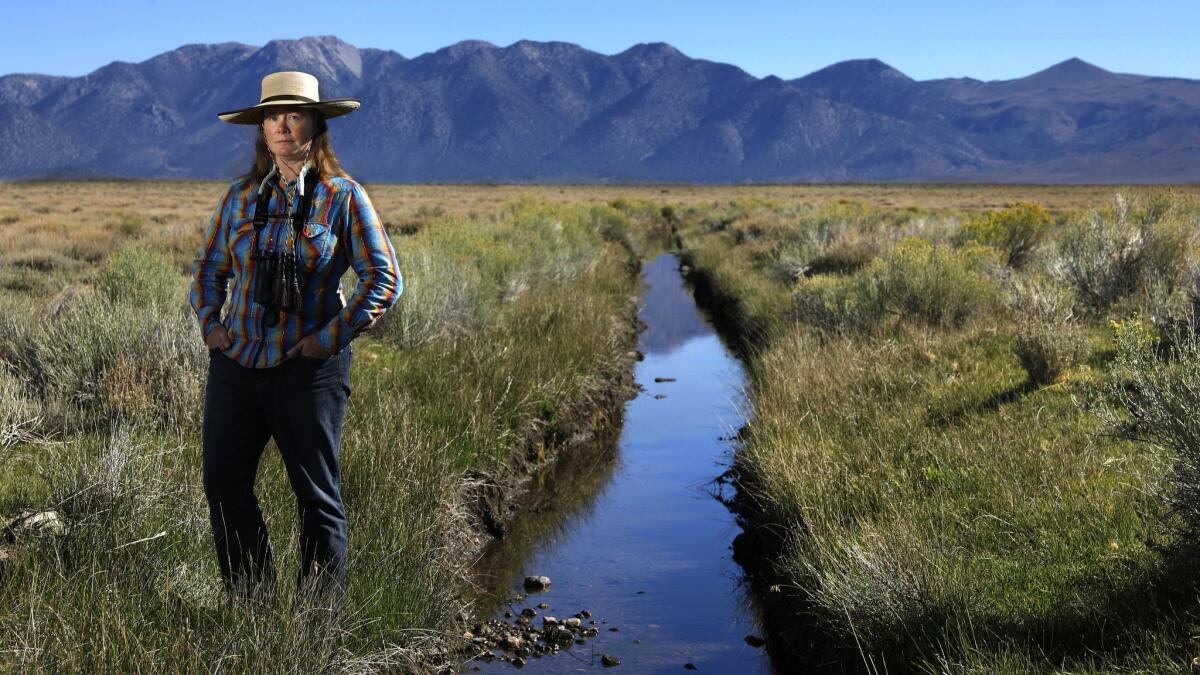
Laura Cunningham, an artist and biologist who has studied the ecological rhythms of life in Mono County for decades, described the challenge of accommodating sage grouse, cattle ranchers, the local economy and L.A. ratepayers as “one of the most complicated and multifaceted environmental controversies I’ve ever seen.”
“Everyone needs to step back, take a deep breath and start trying to replace their biases with information gathered from scientific research,” she said. “Otherwise, the sage grouse will spiral into oblivion while people with clashing agendas fight over the effects of climate change.”
Levine could not agree more.
“We are committed to protecting the sage grouse,” he said. “But we have concluded that it’s not fair for ratepayers to subsidize unnecessary extra water for Mono County ranchers at a time when we’re facing climate change issues, drought and regulatory requirements regarding water conservation.”
More to Read
Sign up for Essential California
The most important California stories and recommendations in your inbox every morning.
You may occasionally receive promotional content from the Los Angeles Times.
